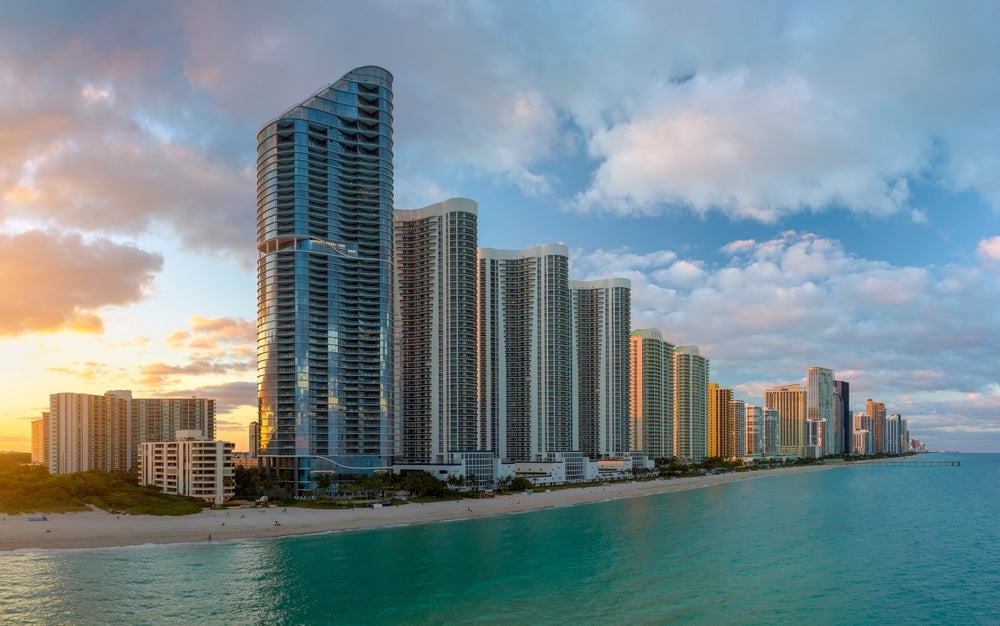
What goes up must come down. However, buyers who spent millions of dollars on luxury Miami condos only a few years ago didn’t expect them to come down so soon.
According to a new study from the University of Miami, superhigh structures like the celebrated 641-foot-tall Porsche Design Tower lining the barrier islands north of Miami are “sinking” at an alarming rate. The study calls into question the stability of the buildings, particularly along Sunny Isles Beach, noting that 35 buildings have sunk three inches in the last seven years, a subsidence rate of just under half an inch per year.
Don’t Miss:
Some Of Miami’s Most Glamorous Towers Have Been Affected
MSN.com reports that The Ritz Carlton Residences and both Trump Towers are among the iconic towers that are losing stature, along with the Porsche Design Tower. This study is made all the more alarming in the wake of the tragedy of the nearby 12-story Surfside, Florida, where the Champlain Towers South building collapsed in June 2021, killing 98 people. That collapse, however, is thought to have been caused by bad structural design, deterioration and poor maintenance rather than subsidence.
Satellite Technology And Multiple Studies
Using complex satellite technology and cross-referencing their studies with those from other universities to legitimize their findings, the University of Miami has discovered the shocking subsidence rate exists along several parts of the Southern Florida coastline.
See Also: Commercial real estate has historically outperformed the stock market, and this platform allows individuals to invest in commercial real estate with as little as $5,000 offering a 12% target yield with a bonus 1% return boost today!
Although subsidence is common among newly constructed structures, the weight of the high-rises has accelerated the process, which must also call into question the geological surveys conducted before construction. Contributing factors to accelerated subsidence can include the following:
- Daily tidal movements
- Cracking limestone
- Soil grains
- Groundwater flow from underground construction.
“We found that subsidence in most high-rises slows down over time, but in some cases, it continues at a steady rate. This suggests that subsidence could persist for an extended period,” senior author Falk Amelung said.
The sinking “is primarily due to the gradual reconfiguration of the sand grains into a denser packing within sandy layers interbedded in the limestone” in the area, the study said. Khaled Siobhan, a geotechnical engineering professor at Florida Atlantic University, told Interesting Engineering, as reported by MSN, “The subsidence is probably a combination of several mechanisms and these findings raise important questions that need further investigation.”
Trending: Maker of the $60,000 foldable home has 3 factory buildings, 600+ houses built, and big plans to solve housing — you can become an investor for $0.80 per share today.
Sinking Could Be Widespread Along The High-Priced Celeb-Studded Shoreline
The Porsche Design Tower has been home to several celebrities, including soccer legend Lionel Messi, Carlos “CarGo” González, the star player of the Colorado Rockies, Mexican billionaire Carlos Peralta Quintero and rapper Birdman, who rented in the tower, the building’s website reported. One of the tower’s main attractions is the internal garage lift system, which allows ultimate privacy by enabling cars to be parked outside the owner’s apartments – which, in the wake of the subsidence fears, adds considerable weight to the building. However, no determination has been made at this point concerning the sinking rate of individual buildings according to their height and weight. According to NPR.org, scientists said preliminary data also suggests sinking or settling further north along the beaches of Broward and Palm Beach counties.
Should the subsidence continue and different sections of affected buildings subside at different rates, scientists fear foundation cracks, utility breaks and long-term damage could occur.
Read Next:
Market News and Data brought to you by Benzinga APIs
© 2024 Benzinga.com. Benzinga does not provide investment advice. All rights reserved.

